Everything You Need To Know About Freemium Conversion Rates in 2023
Everything You Need To Know About Freemium Conversion Rates in 2023
Everything You Need To Know About Freemium Conversion Rates in 2023
What is the perfect freemium conversion rate your SaaS company should aim for? Find out industry-wide benchmarks, and tips to optimize your freemium conversion rates in 2023 with this article.
What is the perfect freemium conversion rate your SaaS company should aim for? Find out industry-wide benchmarks, and tips to optimize your freemium conversion rates in 2023 with this article.
What is the perfect freemium conversion rate your SaaS company should aim for? Find out industry-wide benchmarks, and tips to optimize your freemium conversion rates in 2023 with this article.
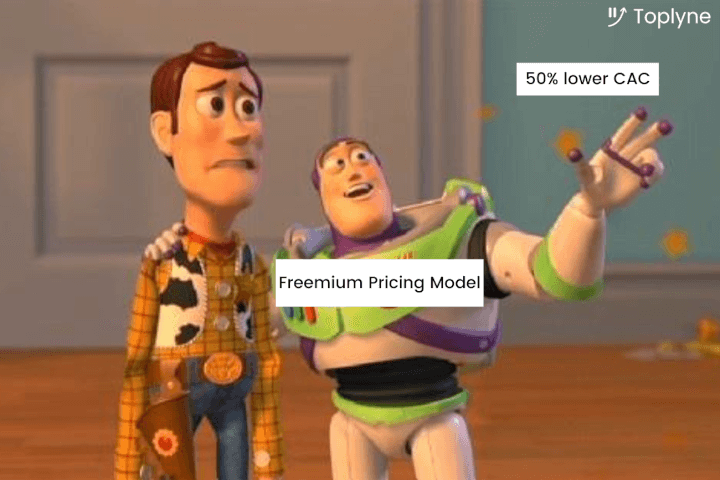


Freemium is a popular monetization strategy that can blow up your company or, if not strategized well, run it to the ground. A crucial deciding factor in this is your freemium conversion rate.
But what is a good conversion rate from freemium to premium? And how can you succeed in improving your conversion rates to make sure your company is thriving?
If you’re feeling lost, worry not! We’ve got your back.
We’ll answer these questions as we take you through what freemium is, how to improve your conversion rate, and show you how some other companies have done it.
Let’s dive right in!
What is freemium?
Freemium is a tiered customer acquisition strategy that offers users a free tier and premium tiers.
Don’t knock it till you’ve tried it, right?

The free tiers of the freemium model allow you to use some features of the service for free. You must pay to upgrade to the premium tiers to access more advanced features.
This lets people explore your service on their own, helping you build trust and provide value to your customers!
The freemium model also reduces the customer acquisition cost (CAC) for your business. It brings in customers without needing to spend big bucks on advertising campaigns.
Get this: companies using the freemium model can have up to 50% lower CAC according to Profitwell.
Yayyy for better ROI 🤩

Freemium product offerings widen the top of the funnel more than any other sales strategy – they can generate 33% additional free accounts for every website visitor. Free users who have found value in the product and have integrated it into their workflows will, over time, see the need to upgrade to a premium tier 💸 to access greater functionality.
The limitations of the free version can be:
feature limitations
usage quotas
limited support
Many SaaS companies have nailed this, and we’ll be exploring three such companies later in this article.
Ideal freemium conversion rate benchmarks
When we’re talking about SaaS businesses with freemium models, a conversion rate is simply the percentage of free users who convert to becoming paying customers.
The average freemium conversion rate ranges from 1% – 10%. Typically, the ideal freemium conversion rate is 2% – 5%.
But it isn’t always a cakewalk to achieve this... it’s more like an adventurous trail🏂
It’s important to remember that conversion rates may not remain stable.
Companies like Spotify and Slack have conversion rates that far exceed these metrics – both have conversion rates upwards of 30%.
Freemium is both a powerful and risky customer acquisition strategy. It can be the ideal model for some companies, but it’s essential to analyze 🧐 the pros and cons before choosing it.
Benefits and risks of freemium
Let’s walk through some of the benefits and risks of the freemium model.
Benefits
Since freemium offers people value upfront, it’s a structure that has numerous benefits:
1) Offers value without pressure to buy
The freemium model gives customers the opportunity to use and experience your product without rushing into a purchase. This lets them explore the product thoroughly and experience complete value.
The lack of pressure to buy gives customers a reason to trust the brand and make a purchase organically among the pricing tiers of the SaaS product.
2) Lets you collect and evaluate a large amount of customer data
Attracting a wide range of potential customers through a freemium option means that you can collect a large amount of user data and feedback.

Your data is valuable - and analyzing it can help you come up with targeted strategies to increase your freemium conversion metrics! For instance, you can use the data to create user personas to optimize your customer outreach.
And here’s yet another bonus: with user data and customer feedback, you can personalize the onboarding process to make it super smooth and engaging for users!
3) Customer loyalty can make it easier to upsell
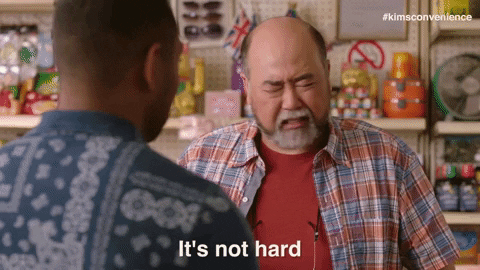
With the freemium model, your customer is already using your product (even if it’s for free). They’ve given it a chance without you having to sell to them directly. This makes upselling so much easier than if you were marketing a product traditionally!
And if they’ve been using it consistently, that means they trust and value your brand.
All you have to do then is take it to the next level:
When the free plan features become too limited for them, users may lean towards upgrading – and you can then convert them with special offers, discounts, free trials, and more! Kaching!🤑
4) Highly scalable
Speaking of limited features, the freemium model lets you scale with your customer’s needs.
Users prefer to use the free plan before becoming paying customers for several reasons: it’s a test run of your product, it’s free, and the user may simply have no need for the premium features when they start using your product.
However, once a customer’s needs extend beyond the limits of the free plan, they will scale up to the premium tiers to continue using the product effectively.

5) Shareable and easily accessible
Easy access is perhaps one of the most significant benefits of the freemium model. When absolutely anyone with an internet connection can use your product anywhere in the world, you are bound to have many people putting trust in and deriving value from your offerings.
This enables one of the most powerful marketing strategies: word of mouth 🗣
Referrals have an expansive ripple effect. Even if your free users are not directly paying customers, they see the value of your product and will help you reach a much wider audience – some of whom will become paying customers!
Risks
The freemium model has many benefits, but that alone doesn’t mean it’s the right option for a company.
Freemium can be a risky game, and before you play it, here are some of the disadvantages you should consider:
1) Conversion rates may be too low
With ideal freemium conversion rate benchmarks between two and five percent, having a Saas conversion rate lower than this average could potentially mean a loss for your company 📉
Without a significant enough SaaS conversion rate, you may offer users free benefits for minimal ROI – something that ultimately makes for an unsustainable model.
2) Disproportionate strain on company resources
Even if your company meets the conversion rate benchmarks, free users take up a lot of server space and can burn your resources.
If your business cannot handle this strain on resources, it may become difficult for you to keep up even if you have a good conversion rate of paying customers.
3) Offering too much value in the free version
The main point of freemium is to give just enough value to free users that they understand the core of your business and can use a certain amount of basic features. Once they reach the limits of the free plan, they are organically incentivized to upgrade to the premium plan for more functionality.
This will not work if you provide a lot of features on the free plan that there’s almost no incentive for users to upgrade and become paying customers. Without that, your conversion rates will remain too low to sustain.
You don’t want to end up like...
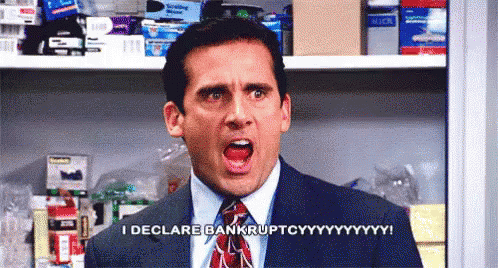
The paramount aim of employing the freemium model as a customer acquisition strategy is to increase the number of customers subscribed to your paid plans. Your freemium model’s success can be reflected in its conversion rate, which should typically be between 2% and 5%.
Tips to get your freemium conversion rates rolling
If you’re looking to increase this number and go beyond the freemium conversion rate benchmarks, here are some tips you can use to optimize your strategy:
1.Offer value in the free product (while incentivizing an upgrade to the paid tiers)
Freemium is about providing just the right amount of service value and limitations for new users. The value gap between the free and paid plans gives users the incentive to upgrade.
Offering value in the free product is crucial – it lets consumers explore your product, build trust, and solve a pain point of theirs. But offering too much value can be detrimental.
If Alfred said this to Batman, we can say it to you...

Setting limitations on the free plan creates a need for the free user to upgrade.
You can use your product usage data and competitor analysis to set the right balance between the free and premium plans.
2.Create a consumption habit in your customers
Another way to create a need for free users to upgrade is to create a consumption habit in them. Successful freemium models provide a product to customers that they can use regularly and integrate or automate into their daily life or workflows – as Spotify, Slack, Dropbox, and Notion have done.
Once a customer has built a habit of using your product, they will have a more substantial need to upgrade to paid plans. This is the core of the product-led growth strategy here at Toplyne.Your ideal freemium client should be using your product and going...
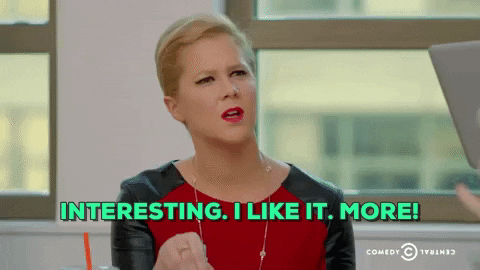
3.Offer a full-feature free trial or demo
Though many premium softwares don’t use the freemium model and only offer free trials, you don’t need to limit yourself to one or the other. Free trials provide a different set of benefits than freemium.
Users get to experience the full functionality of the premium plan in a free trial, helping them to make a much more informed decision about their decision to get on a paid plan.
This combined approach lets you optimize the best of both strategies.
The free trial also doesn’t pressure customers to buy, but experiencing the full value of a product may convince them to upgrade, making it a free trial conversion.
And if they choose to continue using the free version post the free trial, the limitations might feel much more restrictive to them, leading them to ultimately convert.
4.Use your product and user data to create a more targeted strategy
Streamlining your strategy to make it more targeted can ensure your sales team is targeting the customers who are most likely to convert – thus increasing your success in reaching freemium conversion rate benchmarks.
Don’t sleep on your data: To optimize this process, you can use and analyze product usage data and third-party data on consumers.
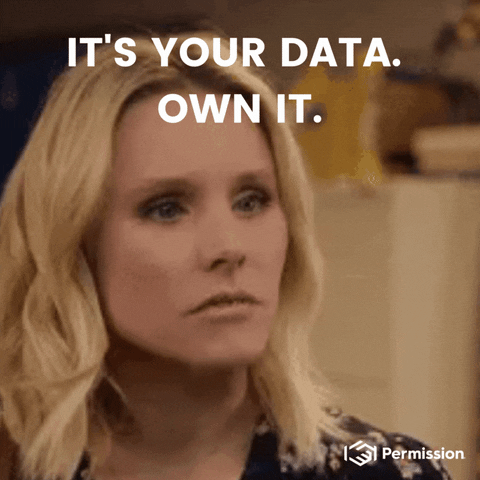
With product usage data, you can target users who use your product the most or those who are close to reaching the limits of your free plan.
Third-party data, on the other hand, can help you learn which of your users have the highest revenue potential or needs beyond the free plan your product can meet.
This process, however effective it may be, can be tedious to do in-house. In that case, you might want to consider outsourcing to a company like Toplyne, which has elevated the growth of companies like Canva, Gather.town, and InVideo.
5.Collect regular feedback through short surveys
You must have seen the small feedback forms that occasionally appear when you are using a product.
They usually ask you just 2-3 quick questions about your user experience and if you are likely to recommend the product to others. These short, occasional surveys will help your business understand your customers’ preferences, needs, and expectations.
Ultimately, this will push you to understand and target users’ obstacles to upgrading. What’s more, you will have insight on what to improve about your product so that users will have more reason to convert than before 😎
6.Prioritize customer success with a smooth user onboarding process
When you have a freemium model, you’re letting your product do all the talking. This makes having a smooth user onboarding process absolutely essential for customer success and a lower churn rate.
If your customers valued your product when it was free, they expect that value to be multiplied tenfold when they pay for the premium version.
Providing them with a good onboarding experience ensures that the premium version of the product will make their lives easier. And with 86% of people saying that they are likely to retain customer loyalty to a brand that invests in creating a good onboarding experience, this is not an area you want to slack off on.
After all, customer is king, right?

Apart from sending welcome emails, providing comprehensive FAQs, and allotting dedicated customer service teams to your paying customers, here are some things you can do to improve conversions through a smooth onboarding process:
Streamline your sign-up process
Only ask for the minimum data needed beyond the credit card information from the user during the sign-up process. Simplifying the sign-up form allows users to take the path of least resistance when transitioning from free to paid plans.
If you’re worried about missing out on collecting user information, you will have more chances to do so once the user completes their sign-up to the paid plan!
Make your product tours personalized and interactive
Product tours and demos can become a drag if they are not interactive. You don’t want customers thinking...

When you personalize the onboarding process, you can virtually welcome the user and walk them through the interface so that they can have a step by step understanding of how to use your product and optimize their efficiency.
Users are also likely to remember the functions better with a practical learning experience during the onboarding. Another cool way to make the onboarding process interactive is to use checklists to help users get a thorough walkthrough of the entire interface.
You’ve got to leave your customers feeling like this instead 👇

Now that we’ve explored what you can do to improve your conversion rates, let’s look at three companies that have succeeded with such strategies.
Improving freemium conversion rates: 3 success stories
Three giants, among others, have broken through the proverbial glass ceiling of conventional freemium conversion rate benchmarks and have found immense global success in the freemium model: Spotify, Slack, and Dropbox. Here’s a little bit about how they did it:
1) Spotify
In the first fiscal quarter of 2022, Spotify had a conversion rate of 43%. The popular music streaming app is a unique example because it is a B2C product, so it likely requires more uncomplicated strategies to increase conversions.
Spotify allows free users to stream most of their music, but they have created a limitation by playing ads between songs that may disturb one’s music-hearing experience. The Premium plan offers an ad-free experience with improved sound quality and the ability to download songs and listen to them even offline.
The other hook that Spotify uses to retain users and incentivize conversion is its social features and curated playlists – making the act of listening to music feel like a community experience and incredibly personalized at the same time.

This app has used many of the tactics we’ve discussed above and more, and Spotify’s numbers speak for itself.
2) Slack
At 30%, Slack has had one of the highest paid conversion rates in the B2B SaaS industry. It employs every good tactic in the book – it’s a daily-use product 🗓 that is integrated into most people’s workflows.
Its free plan has just enough value for freemium use while having just enough limitations that any team communicating on Slack will eventually need to upgrade to its paid tiers. It’s also a customer-centric product that has exceptional customer success.
Slack also relies, in a way, on virality – the more users there are on Slack, the more will join. These are just some of the ways in which they’ve ensured that 65 of the Fortune 100 companies, and many more across the globe, are using Slack for their business needs.

3) Dropbox
Dropbox is a valuable and widely used cloud storage and file-sharing service that acquired 17.09 million paying users in 2022’s first fiscal quarter.
The secret to their success? Dropbox has adopted a usage quota limitation, with their free plan allowing up to 2GB of space for storage and basic file sharing.
Since Dropbox has made backing up and file sharing across devices so easy 🧑💻, you’ll probably end up exceeding the 2GB limit in no time! And if you’ve got a lot of files with no other place to put them, you’re just going to have to pay to upgrade.
Dropbox’s conversion rate may not be as high as Spotify or Slack. Still, it is an excellent example of a company thriving even at an average conversion rate within the upper range of the freemium conversion rate benchmarks.
4) Murf
Synthetic speech company Murf lets users generate “human-like” voiceovers without needing to buy recording equipment or hire a voice artist.
Its free tier allows users up to 10 mins of voice generation and transcription. This provides enough value from the product for users to upgrade to a paid plan.
Murf saw a 7x lift in its free-to-paid conversions by using Toplyne to surface conversion pipeline in Brevo, where their sales teams trigger email sequences prompting a discount code to upgrade to a pro plan.
Summary
The core of the freemium business model is providing enough free value to build a loyal customer base while ensuring that the limitations of the free plan will eventually require users to convert to paid plans.
For anyone considering freemium to power their product-led growth, one thing is key:
Create a hook in your product that the customer keeps coming back to.

When looking at some real-life success stories, we found that the one thing in common they all have is that their product has become an integral part of their customers’ lives. That’s the job of your product’s hook.
Conversion rates may fluctuate, but you can optimize your strategy to increase your conversion rates with these tips. Or you can sign up to use Toplyne to do it for you, just like they have done for Canva, Grafana Labs, InVideo, and many more companies!
Freemium is a popular monetization strategy that can blow up your company or, if not strategized well, run it to the ground. A crucial deciding factor in this is your freemium conversion rate.
But what is a good conversion rate from freemium to premium? And how can you succeed in improving your conversion rates to make sure your company is thriving?
If you’re feeling lost, worry not! We’ve got your back.
We’ll answer these questions as we take you through what freemium is, how to improve your conversion rate, and show you how some other companies have done it.
Let’s dive right in!
What is freemium?
Freemium is a tiered customer acquisition strategy that offers users a free tier and premium tiers.
Don’t knock it till you’ve tried it, right?

The free tiers of the freemium model allow you to use some features of the service for free. You must pay to upgrade to the premium tiers to access more advanced features.
This lets people explore your service on their own, helping you build trust and provide value to your customers!
The freemium model also reduces the customer acquisition cost (CAC) for your business. It brings in customers without needing to spend big bucks on advertising campaigns.
Get this: companies using the freemium model can have up to 50% lower CAC according to Profitwell.
Yayyy for better ROI 🤩

Freemium product offerings widen the top of the funnel more than any other sales strategy – they can generate 33% additional free accounts for every website visitor. Free users who have found value in the product and have integrated it into their workflows will, over time, see the need to upgrade to a premium tier 💸 to access greater functionality.
The limitations of the free version can be:
feature limitations
usage quotas
limited support
Many SaaS companies have nailed this, and we’ll be exploring three such companies later in this article.
Ideal freemium conversion rate benchmarks
When we’re talking about SaaS businesses with freemium models, a conversion rate is simply the percentage of free users who convert to becoming paying customers.
The average freemium conversion rate ranges from 1% – 10%. Typically, the ideal freemium conversion rate is 2% – 5%.
But it isn’t always a cakewalk to achieve this... it’s more like an adventurous trail🏂
It’s important to remember that conversion rates may not remain stable.
Companies like Spotify and Slack have conversion rates that far exceed these metrics – both have conversion rates upwards of 30%.
Freemium is both a powerful and risky customer acquisition strategy. It can be the ideal model for some companies, but it’s essential to analyze 🧐 the pros and cons before choosing it.
Benefits and risks of freemium
Let’s walk through some of the benefits and risks of the freemium model.
Benefits
Since freemium offers people value upfront, it’s a structure that has numerous benefits:
1) Offers value without pressure to buy
The freemium model gives customers the opportunity to use and experience your product without rushing into a purchase. This lets them explore the product thoroughly and experience complete value.
The lack of pressure to buy gives customers a reason to trust the brand and make a purchase organically among the pricing tiers of the SaaS product.
2) Lets you collect and evaluate a large amount of customer data
Attracting a wide range of potential customers through a freemium option means that you can collect a large amount of user data and feedback.

Your data is valuable - and analyzing it can help you come up with targeted strategies to increase your freemium conversion metrics! For instance, you can use the data to create user personas to optimize your customer outreach.
And here’s yet another bonus: with user data and customer feedback, you can personalize the onboarding process to make it super smooth and engaging for users!
3) Customer loyalty can make it easier to upsell

With the freemium model, your customer is already using your product (even if it’s for free). They’ve given it a chance without you having to sell to them directly. This makes upselling so much easier than if you were marketing a product traditionally!
And if they’ve been using it consistently, that means they trust and value your brand.
All you have to do then is take it to the next level:
When the free plan features become too limited for them, users may lean towards upgrading – and you can then convert them with special offers, discounts, free trials, and more! Kaching!🤑
4) Highly scalable
Speaking of limited features, the freemium model lets you scale with your customer’s needs.
Users prefer to use the free plan before becoming paying customers for several reasons: it’s a test run of your product, it’s free, and the user may simply have no need for the premium features when they start using your product.
However, once a customer’s needs extend beyond the limits of the free plan, they will scale up to the premium tiers to continue using the product effectively.

5) Shareable and easily accessible
Easy access is perhaps one of the most significant benefits of the freemium model. When absolutely anyone with an internet connection can use your product anywhere in the world, you are bound to have many people putting trust in and deriving value from your offerings.
This enables one of the most powerful marketing strategies: word of mouth 🗣
Referrals have an expansive ripple effect. Even if your free users are not directly paying customers, they see the value of your product and will help you reach a much wider audience – some of whom will become paying customers!
Risks
The freemium model has many benefits, but that alone doesn’t mean it’s the right option for a company.
Freemium can be a risky game, and before you play it, here are some of the disadvantages you should consider:
1) Conversion rates may be too low
With ideal freemium conversion rate benchmarks between two and five percent, having a Saas conversion rate lower than this average could potentially mean a loss for your company 📉
Without a significant enough SaaS conversion rate, you may offer users free benefits for minimal ROI – something that ultimately makes for an unsustainable model.
2) Disproportionate strain on company resources
Even if your company meets the conversion rate benchmarks, free users take up a lot of server space and can burn your resources.
If your business cannot handle this strain on resources, it may become difficult for you to keep up even if you have a good conversion rate of paying customers.
3) Offering too much value in the free version
The main point of freemium is to give just enough value to free users that they understand the core of your business and can use a certain amount of basic features. Once they reach the limits of the free plan, they are organically incentivized to upgrade to the premium plan for more functionality.
This will not work if you provide a lot of features on the free plan that there’s almost no incentive for users to upgrade and become paying customers. Without that, your conversion rates will remain too low to sustain.
You don’t want to end up like...

The paramount aim of employing the freemium model as a customer acquisition strategy is to increase the number of customers subscribed to your paid plans. Your freemium model’s success can be reflected in its conversion rate, which should typically be between 2% and 5%.
Tips to get your freemium conversion rates rolling
If you’re looking to increase this number and go beyond the freemium conversion rate benchmarks, here are some tips you can use to optimize your strategy:
1.Offer value in the free product (while incentivizing an upgrade to the paid tiers)
Freemium is about providing just the right amount of service value and limitations for new users. The value gap between the free and paid plans gives users the incentive to upgrade.
Offering value in the free product is crucial – it lets consumers explore your product, build trust, and solve a pain point of theirs. But offering too much value can be detrimental.
If Alfred said this to Batman, we can say it to you...

Setting limitations on the free plan creates a need for the free user to upgrade.
You can use your product usage data and competitor analysis to set the right balance between the free and premium plans.
2.Create a consumption habit in your customers
Another way to create a need for free users to upgrade is to create a consumption habit in them. Successful freemium models provide a product to customers that they can use regularly and integrate or automate into their daily life or workflows – as Spotify, Slack, Dropbox, and Notion have done.
Once a customer has built a habit of using your product, they will have a more substantial need to upgrade to paid plans. This is the core of the product-led growth strategy here at Toplyne.Your ideal freemium client should be using your product and going...

3.Offer a full-feature free trial or demo
Though many premium softwares don’t use the freemium model and only offer free trials, you don’t need to limit yourself to one or the other. Free trials provide a different set of benefits than freemium.
Users get to experience the full functionality of the premium plan in a free trial, helping them to make a much more informed decision about their decision to get on a paid plan.
This combined approach lets you optimize the best of both strategies.
The free trial also doesn’t pressure customers to buy, but experiencing the full value of a product may convince them to upgrade, making it a free trial conversion.
And if they choose to continue using the free version post the free trial, the limitations might feel much more restrictive to them, leading them to ultimately convert.
4.Use your product and user data to create a more targeted strategy
Streamlining your strategy to make it more targeted can ensure your sales team is targeting the customers who are most likely to convert – thus increasing your success in reaching freemium conversion rate benchmarks.
Don’t sleep on your data: To optimize this process, you can use and analyze product usage data and third-party data on consumers.

With product usage data, you can target users who use your product the most or those who are close to reaching the limits of your free plan.
Third-party data, on the other hand, can help you learn which of your users have the highest revenue potential or needs beyond the free plan your product can meet.
This process, however effective it may be, can be tedious to do in-house. In that case, you might want to consider outsourcing to a company like Toplyne, which has elevated the growth of companies like Canva, Gather.town, and InVideo.
5.Collect regular feedback through short surveys
You must have seen the small feedback forms that occasionally appear when you are using a product.
They usually ask you just 2-3 quick questions about your user experience and if you are likely to recommend the product to others. These short, occasional surveys will help your business understand your customers’ preferences, needs, and expectations.
Ultimately, this will push you to understand and target users’ obstacles to upgrading. What’s more, you will have insight on what to improve about your product so that users will have more reason to convert than before 😎
6.Prioritize customer success with a smooth user onboarding process
When you have a freemium model, you’re letting your product do all the talking. This makes having a smooth user onboarding process absolutely essential for customer success and a lower churn rate.
If your customers valued your product when it was free, they expect that value to be multiplied tenfold when they pay for the premium version.
Providing them with a good onboarding experience ensures that the premium version of the product will make their lives easier. And with 86% of people saying that they are likely to retain customer loyalty to a brand that invests in creating a good onboarding experience, this is not an area you want to slack off on.
After all, customer is king, right?

Apart from sending welcome emails, providing comprehensive FAQs, and allotting dedicated customer service teams to your paying customers, here are some things you can do to improve conversions through a smooth onboarding process:
Streamline your sign-up process
Only ask for the minimum data needed beyond the credit card information from the user during the sign-up process. Simplifying the sign-up form allows users to take the path of least resistance when transitioning from free to paid plans.
If you’re worried about missing out on collecting user information, you will have more chances to do so once the user completes their sign-up to the paid plan!
Make your product tours personalized and interactive
Product tours and demos can become a drag if they are not interactive. You don’t want customers thinking...

When you personalize the onboarding process, you can virtually welcome the user and walk them through the interface so that they can have a step by step understanding of how to use your product and optimize their efficiency.
Users are also likely to remember the functions better with a practical learning experience during the onboarding. Another cool way to make the onboarding process interactive is to use checklists to help users get a thorough walkthrough of the entire interface.
You’ve got to leave your customers feeling like this instead 👇

Now that we’ve explored what you can do to improve your conversion rates, let’s look at three companies that have succeeded with such strategies.
Improving freemium conversion rates: 3 success stories
Three giants, among others, have broken through the proverbial glass ceiling of conventional freemium conversion rate benchmarks and have found immense global success in the freemium model: Spotify, Slack, and Dropbox. Here’s a little bit about how they did it:
1) Spotify
In the first fiscal quarter of 2022, Spotify had a conversion rate of 43%. The popular music streaming app is a unique example because it is a B2C product, so it likely requires more uncomplicated strategies to increase conversions.
Spotify allows free users to stream most of their music, but they have created a limitation by playing ads between songs that may disturb one’s music-hearing experience. The Premium plan offers an ad-free experience with improved sound quality and the ability to download songs and listen to them even offline.
The other hook that Spotify uses to retain users and incentivize conversion is its social features and curated playlists – making the act of listening to music feel like a community experience and incredibly personalized at the same time.

This app has used many of the tactics we’ve discussed above and more, and Spotify’s numbers speak for itself.
2) Slack
At 30%, Slack has had one of the highest paid conversion rates in the B2B SaaS industry. It employs every good tactic in the book – it’s a daily-use product 🗓 that is integrated into most people’s workflows.
Its free plan has just enough value for freemium use while having just enough limitations that any team communicating on Slack will eventually need to upgrade to its paid tiers. It’s also a customer-centric product that has exceptional customer success.
Slack also relies, in a way, on virality – the more users there are on Slack, the more will join. These are just some of the ways in which they’ve ensured that 65 of the Fortune 100 companies, and many more across the globe, are using Slack for their business needs.

3) Dropbox
Dropbox is a valuable and widely used cloud storage and file-sharing service that acquired 17.09 million paying users in 2022’s first fiscal quarter.
The secret to their success? Dropbox has adopted a usage quota limitation, with their free plan allowing up to 2GB of space for storage and basic file sharing.
Since Dropbox has made backing up and file sharing across devices so easy 🧑💻, you’ll probably end up exceeding the 2GB limit in no time! And if you’ve got a lot of files with no other place to put them, you’re just going to have to pay to upgrade.
Dropbox’s conversion rate may not be as high as Spotify or Slack. Still, it is an excellent example of a company thriving even at an average conversion rate within the upper range of the freemium conversion rate benchmarks.
4) Murf
Synthetic speech company Murf lets users generate “human-like” voiceovers without needing to buy recording equipment or hire a voice artist.
Its free tier allows users up to 10 mins of voice generation and transcription. This provides enough value from the product for users to upgrade to a paid plan.
Murf saw a 7x lift in its free-to-paid conversions by using Toplyne to surface conversion pipeline in Brevo, where their sales teams trigger email sequences prompting a discount code to upgrade to a pro plan.
Summary
The core of the freemium business model is providing enough free value to build a loyal customer base while ensuring that the limitations of the free plan will eventually require users to convert to paid plans.
For anyone considering freemium to power their product-led growth, one thing is key:
Create a hook in your product that the customer keeps coming back to.

When looking at some real-life success stories, we found that the one thing in common they all have is that their product has become an integral part of their customers’ lives. That’s the job of your product’s hook.
Conversion rates may fluctuate, but you can optimize your strategy to increase your conversion rates with these tips. Or you can sign up to use Toplyne to do it for you, just like they have done for Canva, Grafana Labs, InVideo, and many more companies!
Related Articles




Behavioral Retargeting: A Game-Changer in the Cookieless Era
Unlock the power of behavioral retargeting for the cookieless future! Learn how it personalizes ads & boosts conversions. #behavioralretargeting




All of Toplyne's 40+ Badges in the G2 Spring Reports
Our customers awarded us 40+ badges in G2's Summer Report 2024.




Unlocking the Full Potential of Google PMax Campaigns: Mastering Audience Selection to Double Your ROAS
Copyright © Toplyne Labs PTE Ltd. 2024
Copyright © Toplyne Labs PTE Ltd. 2024
Copyright © Toplyne Labs PTE Ltd. 2024
Copyright © Toplyne Labs PTE Ltd. 2024